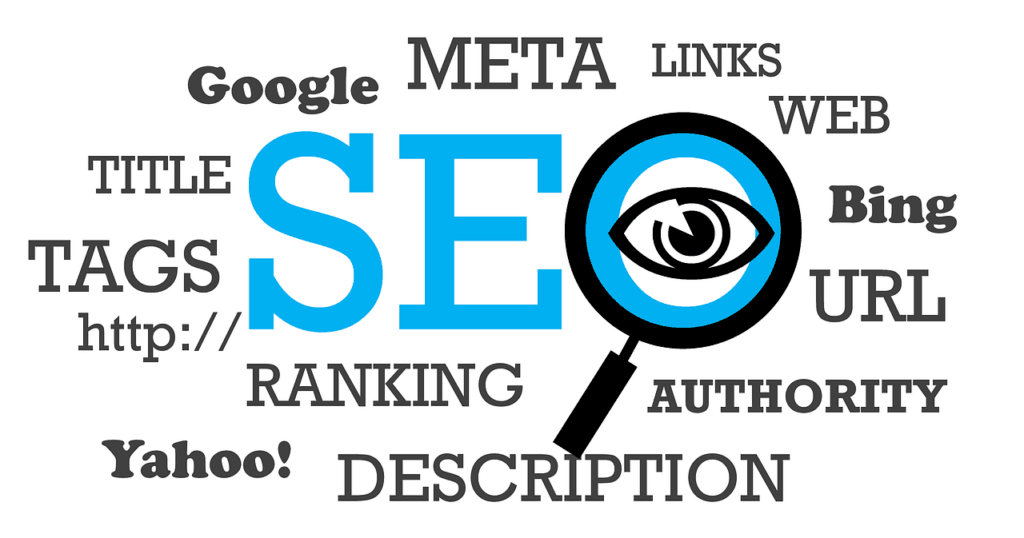This Article has been revised, edited and added to, by Poulomi Chakraborty.
Creating evergreen content is essential for financial websites aiming to attract and retain visitors over the long term. Unlike trending topics, which have a short lifespan, evergreen content remains relevant and useful for an extended period. This kind of content not only improves your site’s SEO but also positions your brand as a reliable source of valuable information.
In this article, we’ll explore a variety of evergreen content ideas tailored specifically for financial websites. These ideas are designed to engage your audience, provide them with actionable insights, and keep them coming back for more. Whether you’re focusing on personal finance, investing, insurance, or financial planning, you’ll find strategies to help you create content that stands the test of time.
Comparing Short-Term vs. Long-Term Financial Strategies

One key area of interest for any financial website is the debate between short-term and long-term financial strategies. This topic not only generates significant interest but also provides a rich source of content that can be revisited and updated as market conditions change.
Short-Term Financial Strategies
Short-term financial strategies are typically those that aim to achieve results within a year or less. These can include:
- Day Trading: Buying and selling stocks within the same trading day to capitalize on small price movements.
- Savings Accounts and CDs: Utilizing high-yield savings accounts or short-term certificates of deposit (CDs) to earn interest while maintaining liquidity.
- Short-Term Loans: Exploring personal loans, payday loans, or other short-term borrowing options to meet immediate financial needs.
The appeal of short-term strategies lies in their potential for quick returns. For example, day trading can be highly profitable if done correctly, but it also carries significant risk. Financial websites can delve into the pros and cons of these strategies, providing readers with insights into risk management, market analysis, and the psychological aspects of short-term trading.
Long-Term Financial Strategies
In contrast, long-term financial strategies focus on building wealth over several years or even decades. These strategies often involve:
- Investing in Stocks and Bonds: Building a diversified portfolio of stocks, bonds, and other securities to achieve steady growth over time.
- Retirement Planning: Utilizing 401(k) plans, IRAs, and other retirement accounts to ensure financial security in later life.
- Real Estate Investment: Purchasing properties for rental income or long-term appreciation.
Long-term strategies are generally less volatile than short-term ones and can provide a more stable path to financial independence. Content on these topics can include in-depth guides on investment principles, interviews with financial experts, and case studies of successful long-term investors.
Comparison: Risk and Reward
A comparison of short-term and long-term strategies naturally leads to a discussion of risk and reward. Short-term strategies often promise higher rewards but come with increased risk. Conversely, long-term strategies tend to offer more moderate returns with reduced risk.
For instance, day trading requires constant monitoring of the markets and a high tolerance for risk. The potential for substantial gains is balanced by the possibility of significant losses.
On the other hand, investing in a diversified portfolio of stocks and bonds over 20 or 30 years typically results in steady growth, leveraging the power of compound interest while minimizing the impact of short-term market fluctuations.
Engaging Content Ideas
To engage your audience, consider creating content that explores real-life scenarios. For example, you could:
- Interview a Day Trader: Share their daily routine, strategies, and the highs and lows of their trading career.
- Case Study of a Long-Term Investor: Highlight someone who has successfully built a retirement portfolio over decades, discussing their investment choices and the lessons they’ve learned.
- Interactive Tools: Develop calculators or interactive charts that allow users to compare the potential outcomes of different financial strategies based on their personal goals and risk tolerance.
By providing a balanced view of both short-term and long-term financial strategies, you can help your readers make informed decisions that align with their financial goals.
The Importance of Financial Education

Financial education is a cornerstone of financial literacy and stability. Providing your audience with comprehensive and understandable financial education content can significantly boost your website’s value.
Educated consumers are better equipped to make sound financial decisions, and they will trust your site as a go-to resource for reliable information.
Understanding Basic Financial Concepts
Explaining basic financial concepts in simple terms is essential. Covering topics such as budgeting, saving, and understanding credit can lay a solid foundation for your readers. For instance, you could write a detailed article on how to create a budget, including real-life examples and step-by-step instructions.
Illustrate how tracking expenses can help identify spending habits and areas for potential savings. Explain the difference between fixed and variable expenses and how to balance them.
Another critical area is credit scores and reports. Offer clear explanations of what a credit score is, how it is calculated, and why it matters.
Discuss ways to improve and maintain a good credit score, such as timely bill payments and managing credit card balances. Providing this information can empower your audience to take control of their financial health.
Advanced Financial Planning
For readers who are already familiar with the basics, advanced financial planning topics can be incredibly valuable. Dive into subjects like tax planning, estate planning, and retirement strategies.
For example, you could create a comprehensive guide on retirement planning that covers different types of retirement accounts, such as 401(k)s and IRAs, and the benefits and limitations of each.
Explain the importance of starting early and the impact of compound interest on retirement savings. Use real-life scenarios to show how different saving rates and investment returns can affect retirement outcomes.
Discuss strategies for tax-efficient investing, such as using tax-advantaged accounts and understanding capital gains taxes. By providing actionable advice and clear explanations, you can help your readers make informed decisions about their financial futures.
Case Studies and Success Stories
Case studies and success stories are powerful tools for illustrating financial concepts and strategies. Share stories of individuals or families who have successfully managed their finances, detailing the steps they took and the challenges they overcame.
For example, a case study on a couple who paid off significant debt through disciplined budgeting and spending cuts can inspire and motivate your readers.
Highlighting different approaches to financial success can also be educational. Compare the experiences of a young professional who started investing early and a middle-aged individual who began later but invested more aggressively.
These stories can provide valuable insights into the benefits and potential pitfalls of various financial strategies.
Interactive Content and Tools
Interactive content and tools can engage your audience and provide personalized insights. Develop calculators that help users estimate their retirement savings needs, determine how much house they can afford, or evaluate different investment options.
Interactive quizzes can assess users’ financial literacy and suggest areas for improvement.
These tools not only make your content more engaging but also add practical value. By offering personalized insights, you can help your readers take actionable steps toward their financial goals. Additionally, interactive content can increase the time visitors spend on your site, improving your site’s SEO performance.
Financial News and Updates
Staying current with financial news and updates is crucial for maintaining relevance. Regularly update your site with articles on market trends, economic forecasts, and changes in financial regulations.
For example, you could write about the impact of new tax laws on personal finances or how shifts in the housing market affect homebuyers and investors.
Provide analysis and commentary on significant financial events, such as stock market fluctuations or changes in interest rates. By offering timely and insightful content, you can position your site as a trusted source of financial information. This not only helps attract and retain readers but also enhances your site’s credibility and authority.
Personal Finance Management

Personal finance management is a critical area where evergreen content can shine. Offering practical advice on managing money can significantly impact your audience’s financial well-being. This section can cover various aspects, including budgeting, debt management, and saving strategies.
Effective Budgeting Techniques
Effective budgeting is the cornerstone of financial stability. Crafting content that guides readers through the process of creating and maintaining a budget can be incredibly beneficial. Start by explaining the importance of tracking income and expenses.
Highlight different budgeting methods, such as the envelope system, zero-based budgeting, and the 50/30/20 rule, where 50% of income goes to needs, 30% to wants, and 20% to savings.
Use real-life examples to illustrate how these techniques can be applied. For instance, describe how a family can allocate their monthly income to cover essentials like housing, food, and transportation, while also setting aside money for savings and discretionary spending.
Provide tips on how to adjust the budget as circumstances change, such as during a job loss or when taking on additional financial responsibilities.
Managing and Reducing Debt
Debt management is another crucial topic for personal finance. Write comprehensive guides on different types of debt, such as credit card debt, student loans, and mortgages. Explain the differences between good and bad debt, and provide strategies for managing each type effectively.
For instance, discuss the snowball and avalanche methods for paying off debt. The snowball method focuses on paying off the smallest debts first to build momentum, while the avalanche method targets debts with the highest interest rates to save money on interest payments.
Share stories of individuals who have successfully become debt-free, detailing the steps they took and the challenges they faced.
Include practical tips for avoiding debt in the first place, such as living within one’s means, building an emergency fund, and using credit responsibly. By offering actionable advice, you can help your readers take control of their debt and work towards financial freedom.
Saving Strategies and Goals
Saving money is a fundamental aspect of personal finance. Create content that covers various saving strategies and goals, such as building an emergency fund, saving for a down payment on a house, or planning for a major purchase like a car or vacation.
Explain the importance of setting specific, measurable, achievable, relevant, and time-bound (SMART) goals for savings.
Describe different savings vehicles, such as high-yield savings accounts, certificates of deposit (CDs), and money market accounts. Highlight the pros and cons of each option, and provide guidance on choosing the best one based on individual financial goals and risk tolerance.
Offer tips on how to increase savings, such as automating transfers to a savings account, cutting unnecessary expenses, and finding additional sources of income. Share success stories of people who have reached their savings goals, providing inspiration and practical insights for your readers.
Investment Basics
Investing is a key component of long-term financial planning. Write beginner-friendly content that explains the basics of investing, including different types of investments, such as stocks, bonds, mutual funds, and real estate. Discuss the importance of diversification and how it can reduce risk and enhance returns.
Use simple language to explain complex concepts like compound interest, asset allocation, and risk tolerance. Provide examples of how different investment strategies can be tailored to meet various financial goals, such as saving for retirement, funding a child’s education, or building wealth over time.
Include actionable advice on how to get started with investing, such as opening a brokerage account, choosing investments, and monitoring portfolio performance. By demystifying the investment process, you can empower your readers to take control of their financial future.

Retirement Planning
Retirement planning is a critical topic that deserves extensive coverage on any financial website. It’s an area where evergreen content can provide immense value, helping readers to understand the importance of starting early, the various retirement savings options available, and strategies for ensuring a comfortable retirement.
Understanding Retirement Accounts
Explaining the different types of retirement accounts is essential. Start with an overview of 401(k) plans, IRAs (both Traditional and Roth), and other employer-sponsored plans like 403(b)s. Describe the tax advantages of each account type and how they can affect overall savings.
For example, a Traditional IRA allows for tax-deductible contributions, reducing taxable income in the contribution year, while a Roth IRA offers tax-free withdrawals in retirement. Highlight the importance of understanding these differences and choosing the right account based on individual financial situations and future tax expectations.
The Power of Compound Interest
One of the most compelling reasons to start saving for retirement early is the power of compound interest. Create content that vividly illustrates how compound interest works over time. Use examples to show how even small, regular contributions can grow significantly over several decades.
For instance, compare two scenarios: one where an individual starts saving $200 per month at age 25 and another where the individual starts saving the same amount at age 35. Show how the 10-year head start can lead to a substantially larger retirement nest egg, thanks to compound interest.
Creating a Retirement Plan
Guide your readers through the process of creating a comprehensive retirement plan. Emphasize the importance of setting specific retirement goals, such as desired retirement age, expected living expenses, and potential sources of retirement income.
Discuss the importance of estimating future expenses and considering factors like inflation, healthcare costs, and lifestyle choices. Provide tools and calculators that help users project their retirement needs and determine how much they should be saving now to meet those goals.
Diversifying Retirement Savings
Diversification is crucial in retirement planning to manage risk and ensure steady growth. Explain the importance of spreading investments across various asset classes, such as stocks, bonds, and real estate. Discuss how asset allocation should change over time, becoming more conservative as retirement approaches to protect accumulated savings.
Provide examples of different asset allocation strategies for various life stages, from aggressive growth for younger investors to conservative income-focused portfolios for those nearing retirement. By offering actionable advice, you can help readers build diversified portfolios that align with their risk tolerance and retirement goals.
Social Security and Other Income Sources
Educate your audience about Social Security benefits and how they fit into a broader retirement plan. Explain how benefits are calculated, the impact of claiming benefits at different ages, and strategies for maximizing Social Security income.
Additionally, discuss other potential income sources, such as pensions, part-time work, and annuities. Provide insights into the pros and cons of each option and how they can be integrated into a comprehensive retirement income strategy.
Adjusting the Plan Over Time
Retirement planning is not a one-time activity; it requires regular review and adjustment. Encourage your readers to revisit their retirement plans periodically, especially after major life events like marriage, the birth of a child, or a significant change in income.
Offer advice on how to adjust contributions, reassess investment strategies, and update retirement goals as circumstances evolve. By emphasizing the importance of flexibility and ongoing planning, you can help your audience stay on track for a secure retirement.
Tax Planning and Optimization

Tax planning is a vital aspect of financial management that can significantly impact overall wealth. Offering detailed, evergreen content on tax strategies can help your readers minimize their tax burden and make the most of their income.
Understanding Tax Brackets and Rates
Begin by explaining the basics of the tax system, including how tax brackets and rates work. Use clear examples to illustrate how progressive tax rates apply to different portions of income. For instance, you could show how a person earning $50,000 a year is taxed differently on the first $10,000 compared to the income above $40,000.
Explain the differences between federal, state, and local taxes, and how they collectively affect take-home pay. Highlight the importance of understanding one’s marginal tax rate and how it influences financial decisions, such as investments and deductions.
Maximizing Deductions and Credits
Content that covers various tax deductions and credits can be incredibly valuable. Detail the most common deductions, such as mortgage interest, student loan interest, and charitable contributions. Provide a clear explanation of each deduction, who qualifies, and how to claim it.
Discuss tax credits, which directly reduce tax liability. Explain the differences between refundable and non-refundable credits, and provide examples of common credits like the Earned Income Tax Credit (EITC) and the Child Tax Credit. By offering practical tips on how to maximize these benefits, you can help your readers reduce their taxable income and increase their refunds.
Tax-Advantaged Accounts
Tax-advantaged accounts, such as Health Savings Accounts (HSAs) and Flexible Spending Accounts (FSAs), offer significant tax benefits. Create content that explains how these accounts work, their contribution limits, and the tax advantages they provide.
For instance, highlight how contributions to an HSA are tax-deductible, grow tax-free, and can be withdrawn tax-free for qualified medical expenses. Discuss the benefits of using FSAs for medical and dependent care expenses and how they can reduce taxable income.
Retirement Account Tax Strategies
Retirement accounts offer significant tax advantages that can be leveraged for long-term financial planning. Provide in-depth explanations of how contributions to Traditional IRAs and 401(k)s reduce taxable income in the contribution year, while withdrawals are taxed in retirement.
Contrast this with Roth IRAs and Roth 401(k)s, where contributions are made with after-tax dollars, but withdrawals are tax-free. Discuss strategies for choosing between these accounts based on current and expected future tax rates. Explain the benefits of Roth conversions and how they can fit into a broader tax strategy.
Tax Implications of Investments
Investment income can be subject to various types of taxes, including capital gains tax, dividend tax, and interest income tax. Create content that explains the tax implications of different types of investments and strategies for minimizing tax liability.
For example, detail the differences between short-term and long-term capital gains and the respective tax rates. Discuss the benefits of tax-efficient investing, such as holding investments for longer periods to qualify for lower long-term capital gains rates. Explain how tax-loss harvesting can offset capital gains and reduce overall tax liability.
Estate and Gift Tax Planning
Estate and gift taxes can have significant implications for wealth transfer. Provide content that explains how these taxes work, current exemption limits, and strategies for minimizing their impact.
Discuss the benefits of gifting strategies, such as making annual gifts up to the federal gift tax exclusion limit to reduce the taxable estate. Explain the advantages of setting up trusts, such as irrevocable life insurance trusts (ILITs) and grantor retained annuity trusts (GRATs), to protect assets and reduce estate tax liability.
Year-End Tax Planning Tips
As the end of the year approaches, many individuals look for ways to optimize their tax situation. Create a comprehensive guide on year-end tax planning tips, such as accelerating deductions, deferring income, and making charitable contributions.
Explain the benefits of reviewing investment portfolios to harvest tax losses and rebalance assets. Discuss strategies for maximizing retirement account contributions before the year ends and the impact of required minimum distributions (RMDs) for retirees.
Wealth Building Strategies

Building wealth is a long-term endeavor that requires a strategic approach and consistent effort. Financial websites can provide a wealth of information on various strategies to help individuals grow their wealth over time. This section will cover essential topics like saving, investing, and passive income generation.
The Importance of Saving
Saving money is the foundation of wealth building. Emphasize the importance of establishing a solid savings habit early on. Explain the concept of “paying yourself first,” where a portion of income is automatically transferred to savings before other expenses are paid.
Provide practical advice on creating and maintaining an emergency fund. Highlight the importance of having three to six months’ worth of living expenses set aside to cover unexpected costs such as medical emergencies, car repairs, or job loss. Explain how having an emergency fund can prevent the need to dip into investments or incur debt during financial setbacks.
Investing for Growth
Investing is a critical component of wealth building. Provide detailed content on various investment options, such as stocks, bonds, mutual funds, exchange-traded funds (ETFs), and real estate. Explain the benefits and risks associated with each type of investment, and how they can fit into a diversified portfolio.
Describe the principles of asset allocation and diversification. Explain how spreading investments across different asset classes can reduce risk and enhance returns. Use real-world examples to show how different asset allocations can impact portfolio performance over time.
Discuss the importance of understanding one’s risk tolerance and investment time horizon. Provide tools and quizzes that help readers assess their risk tolerance and determine an appropriate investment strategy based on their financial goals and timeline.
Passive Income Generation
Passive income is a powerful tool for wealth building. Create content that explores various ways to generate passive income, such as investing in dividend-paying stocks, rental properties, and peer-to-peer lending.
Explain the concept of dividend investing, where investors buy shares of companies that pay regular dividends. Highlight the benefits of reinvesting dividends to compound returns over time. Provide examples of high-quality dividend-paying stocks and explain how to evaluate a company’s dividend sustainability.
Discuss the benefits and challenges of real estate investing. Provide guidance on how to identify profitable rental properties, manage tenants, and handle property maintenance. Explain the importance of location, property condition, and market trends in real estate investment decisions.
The Role of Compound Interest
Compound interest is a critical concept in wealth building. Create content that explains how compound interest works and its powerful effect over time. Use simple, relatable examples to illustrate how even small, regular investments can grow significantly through the power of compounding.
For instance, compare the future value of a $100 monthly investment over 30 years at different interest rates. Show how higher interest rates and longer investment periods lead to exponential growth. Encourage readers to start investing early to maximize the benefits of compound interest.
Financial Planning for Major Life Events
Major life events, such as marriage, buying a home, and having children, significantly impact financial planning. Provide comprehensive guides on how to plan for these events while building wealth.
For example, explain the financial implications of marriage, such as combining incomes, managing joint expenses, and planning for shared financial goals. Discuss the importance of open communication about finances and creating a joint budget.
When it comes to buying a home, provide detailed advice on saving for a down payment, understanding mortgage options, and evaluating housing affordability. Discuss the long-term financial benefits and responsibilities of homeownership.
For families planning to have children, cover topics such as budgeting for childcare expenses, saving for education, and obtaining adequate life insurance. Highlight the importance of adjusting financial plans to accommodate new family members and future financial needs.
Monitoring and Adjusting Financial Plans
Wealth building is an ongoing process that requires regular review and adjustment. Encourage readers to monitor their financial plans periodically and make necessary adjustments based on changes in income, expenses, and financial goals.
Provide tips on how to track progress towards financial goals, such as using financial planning software or working with a financial advisor. Discuss the importance of staying informed about market trends and economic conditions that may affect investment strategies.
Emphasize the need for flexibility and adaptability in financial planning. Life circumstances and financial markets are constantly changing, and a successful wealth-building strategy must be able to evolve accordingly.
Expert Opinion

SEO in Financial Services: – Security First: In the financial world, security is paramount. We’ve emphasized SSL certificates, secure hosting, and other security measures not just for our users, but also because search engines prioritize secure sites. Regulatory Compliance: SEO isn’t just about keywords and backlinks. In finance, ensuring our content complies with regulations is crucial. It’s a unique challenge, but it ensures our content is trustworthy. Engaging Yet Professional: Finance can be dry, but it doesn’t have to be. We’ve been experimenting with infographics, video content, and interactive tools to make complex financial topics engaging without losing professionalism.
Industry-Specific Hacks: – E-A-T is King: One of the most effective hacks I’ve found is boosting our site’s E-A-T. How? By collaborating with writers who are experts in the field. Their credentials add a layer of credibility to our content. Review and Revamp: We’ve had industry experts review our existing posts. Once reviewed, we add an HTML snippet reviewed By to the content.. It’s a small tweak, but the impact on credibility? Huge.
Recent Experiments: – Data-Driven Insights: We’ve started integrating real-time financial data into our content, ensuring our audience gets the most up-to-date information. The response? Overwhelmingly positive. Navigating SEO in the financial sector is a blend of technical know-how and understanding human psychology. It’s about striking the right balance between technical optimization and user-centric content.
Dominik Mąka, SEO/SEM expert Managing Director at dominikmaka.com
Conclusion
Creating evergreen content for financial websites is an invaluable strategy for attracting and retaining readers. By offering comprehensive, actionable advice on topics such as short-term vs. long-term financial strategies, financial education, personal finance management, retirement planning, tax optimization, and wealth building, you can establish your site as a trusted resource.
Engaging content that educates and empowers readers will not only enhance their financial literacy but also build lasting relationships with your audience. Remember to keep your content updated and relevant, ensuring it continues to provide value over time. This approach will solidify your website’s reputation and drive sustained traffic and engagement.
READ NEXT:
- What is a Business Model? And, How Yours Can be Revolutionary
- How to Use Google Trends for Keyword Research
- Measuring the Impact of Social Media on Healthcare SEO
- User-Centric SEO for SaaS: Balancing Technology and User Experience
- SEO for Telehealth Services





















Comments are closed.